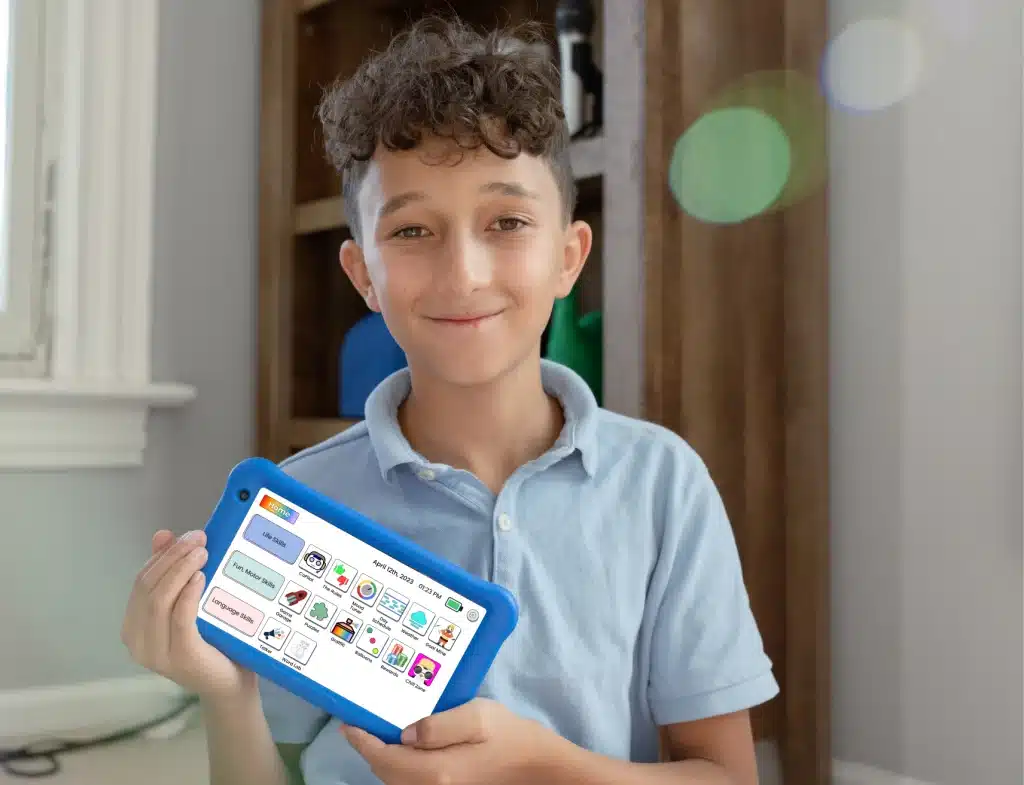If you’re trying to keep track of how often your child exhibits one specific behavior, star behavior charts are the way to go. To use a star behavior chart, choose one behavior you want to see from your child. Anytime they achieve the behavior, they can use a star sticker to fill in their progress on the chart.
Best Behavior Tracking App:
Give your kid an independent future for less than $1/day. Goally has 15+ learning apps that teach life skills.
"Works well for us. I can edit routines on the fly, award extra points for doing something special and start those unscheduled routines when I need them." — Goally Mom. Learn more →
These are some of the most straightforward behavior charts. Choose shiny and colorful star stickers that excite your child to use. They will serve as a motivator because they’ll want to behave and use their stickers as much as possible. Star behavior charts help reinforce whatever behavior you choose.
It’s essential that the expectations are clearly communicated and written on the star behavior chart. Your child must fully understand the new expectations for behavior to be successful. Parents, caregivers, or teachers should approach the use of the star behavior chart with positivity and encouragement.

If a child feels like the behavior chart is a punishment, they’re less likely to want to use it and adapt their actions. To avoid frustrating and overwhelming your kiddo, try to gamify the use of the behavior chart. Choose rewards for when your child makes progress. Be sure that whatever reward you choose, use it the same way each time they succeed.
Using Star Behavior Charts
Consistency is essential to make the chart as effective as possible at reforming behaviors. Let anyone who cares for your child know about their new goals. When the child’s entire support system supports them in alignment with their goals, they’ll have a better chance at making lasting changes for more constructive behaviors.
Remember that everyone has bad days. Your child is going to make a mistakes or have slip-ups. Reforming behaviors takes time; every child learns differently and at different paces. Be patient and encouraging while using these star behavior charts. Check out our star behavior charts below!

Give your kid an independent future. Goally has 15+ learning apps that teach life skills. There are NO web browsers, social media, or YouTube.
Our apps teach executive function, language, emotional regulation, finger dexterity skills, and more. It also 100+ video classes teaching social skills.
Star behavior charts can be a helpful tool in promoting positive behavior and encouraging growth in children. By providing a visual representation of progress and rewarding desirable actions, these charts can motivate and reinforce good behavior. However, it’s important to remember that each child is unique, and what works for one may not work for another. It’s crucial to combine behavior charts with open communication, empathy, and understanding to create a supportive and nurturing environment for children to flourish. Ultimately, the goal is to foster a sense of self-confidence, responsibility, and self-discipline in children, guiding them towards becoming well-rounded individuals.
This post was originally published on 12/29/2023. It was updated on 07/20/2023.

Goally
We help parents teach their kids life skills, like doing bedtime and morning independently. Backed by science, we incorporate evidence-based practices and expert-informed designs in all of our apps and content.





